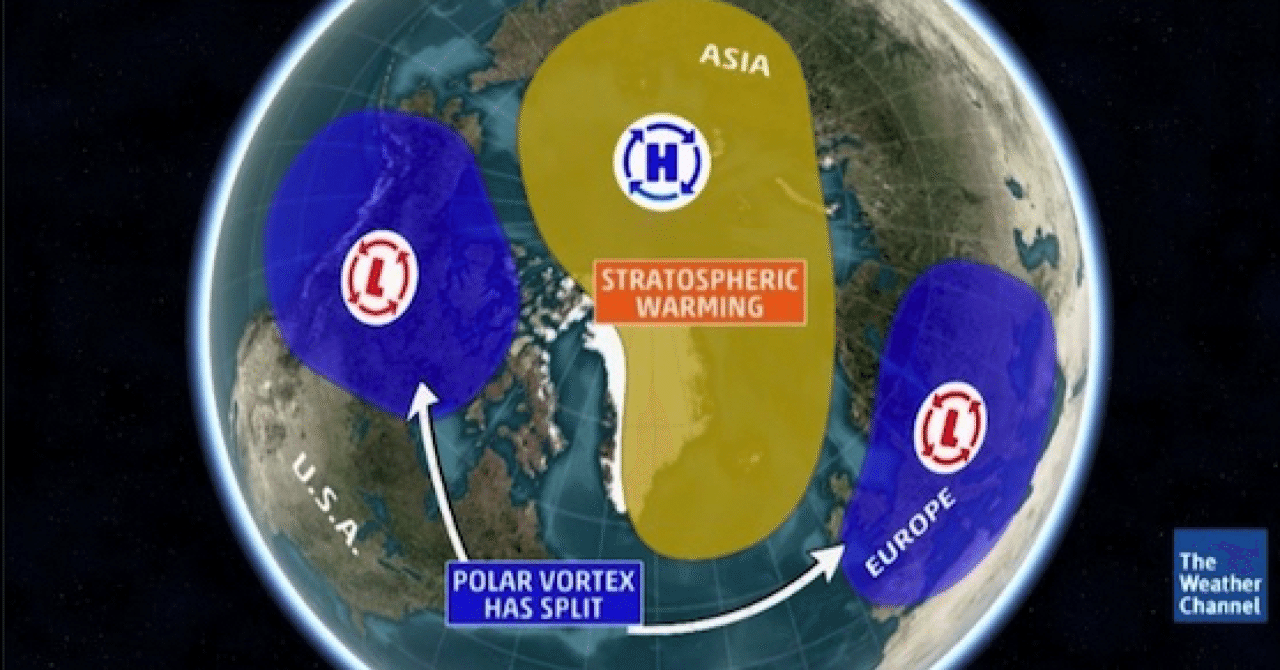While researching convection, the topic of air masses came up. An air mass is a mass of air with a fairly constant temperature and humidity, and it seems to change its strength and sphere of influence with the change of seasons. The boundary between air masses is called a front, and the boundary between air masses with different properties seems to cause drastic changes in weather. Although it is a phenomenon that occurs high up in the sky, it seems to have a large impact on the ground.
Where air masses originate
Air masses have different characteristics depending on where they originate, and are classified by where they originate (land or sea) and latitude (polar to tropical). Air masses are dry if they are continental, humid if they are oceanic, cold in the Arctic and Antarctic, hot at the equator, and between them are the polar and tropical zones. By combining these, their characteristics are determined, such as cold x dry, hot x dry, cold x humid, and hot x humid.
Air masses on Earth
Near Japan, there are the Siberian air mass, the Sea of Okhotsk air mass, the Ogasawara air mass, the Yangtze air mass, and the Tibetan air mass, as well as the equatorial air mass, the Saharan air mass, and the Arctic air mass. The largest in the world is the Siberian air mass, a continental cold air mass that is said to be a huge mass of air covering several million km2. Also, when the Arctic air mass polar vortex, which is usually confined by the jet stream, moves south, it can cause a cold wave, and when the Ogasawara air mass becomes abnormally strong and covers an area, it can cause a heat wave. Although it is far up in the sky, the impact of the gathering air on the ground is significant.

Weather phenomena caused by air masses
When air masses with different properties collide, it seems to cause severe weather phenomena such as rain, snow, and storms. There also seems to be a relationship between air masses and lightning, and there are air mass thunderstorms and heat lightning caused by hot and humid air masses, boundary lightning caused by cold fronts, and vortex lightning caused by typhoons and cold vortexes. Heat lightning is lightning that strikes all at once in cumulonimbus clouds, boundary lightning is lightning that strikes in a band along the movement of the front, and vortex lightning is lightning that strikes while swirling. Except when air masses are stable, if they collide or become active, they will become chaotic, causing violent turbulence. The power of air masses is incredible.
Amazing air mass
Air masses create the climate due to their large size, and are also thought to have a strong influence on ecosystems. From a physical perspective, it seems that the temperature of the air mass has a greater effect on the air temperature than the amount of solar radiation, but I imagine that phenomena far above have a greater impact on the earth’s surface. Air masses are amazing. The Earth’s atmospheric system is amazing.


